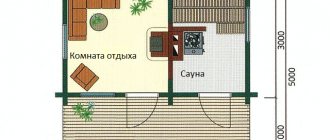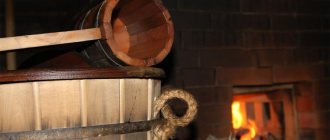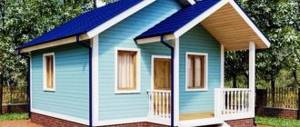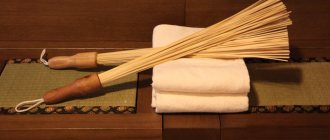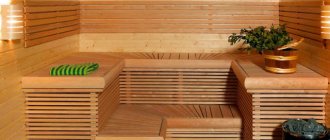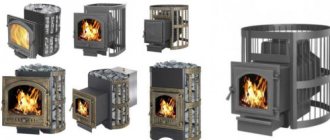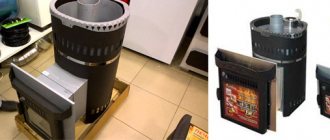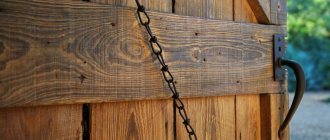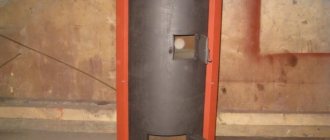Maple is a conqueror, or is it worth growing a useless American tree on Cooper's land?
Everything around is white and white. And this tree stands dark and sports earrings. It's called American maple. Where did it come from in our open spaces? After the war, the country's leadership approved a program for afforestation of agricultural land. Hundreds of thousands of hectares of shelterbelts and ravine forest belts were established. In the first years of this program, shelter belts were created from domestic tree species and to this day they delight the eye with their beauty and harmony. But there were not enough seedlings to complete the planned tasks. The Scandinavian countries began to help. Through one of these countries, seeds from America were brought in large quantities, without knowing the consequences. This is how this plant came to us.
American maple. It cannot be called either a tree or a bush. I paid attention to this plant more than once when I worked at a veterinary station. One day we went early in the morning to vaccinate livestock in the village of Gorodishche, Pakhotnouglovsky village council. Walking through the village, I noticed the lands of abandoned estates and vegetable gardens. Young trees, unlike our elms, willows, and lindens, were raging on them. I was especially impressed by the picture: on the edge of the village, our native, old hero, the sedge with a mighty crown, grew. And around him stood a thick wall of young shoots of American maple, their tops resting against the lower branches of the sedge. Walking around the hero, he looked carefully at this “species” struggle of trees and involuntarily thought: “Without human help, we cannot cope with this green horde.” Returning to this place a few years later, I saw that the sedge had died, and next to it the foreign “miracle” continued to rage. It can be seen in courtyards, squares, front gardens, near residential and abandoned houses and even around office buildings. He has filled everything he can and continues to do so. Some people, after reading the article, will think that Simonov has nothing more to write about or that he no longer cares about other problems? After all, this “comrade” breaks and destroys everything living and non-living where it grows. Be it a sidewalk, the foundation of a building, or a tree growing nearby. Its seeds grow freely, clinging to at least some piece of land. There are a lot of abandoned houses in villages today. Vegetable gardens, front gardens, lands between houses are the most suitable place for this plant. For many years I have been observing that opposite the bath and laundry plant there are no more birch trees, but the American maple stands and scatters seeds from year to year. Anyone who has ever tried to fight this plant has seen how difficult it is for the miracle foreigner to be destroyed. It reproduces both through roots and seeds. Seeds on an adult tree are visible and invisible, and they fly, driven by the wind, around the nearest area, falling into the ground and germinating. It would be possible to do something lenient for this plant if there was at least some benefit from it. But no. It is not used for building materials or firewood... Don’t believe me? Try to split the stump of an American maple; the snag won’t give in.
Worse than in the steppe At one time, I had to contact the Zherdevsky fruit nursery for horse chestnut seedlings. These seedlings were planted in front of the office and canteen at the livestock feeding complex. Some amateurs planted them in the regional center. And how nice it is to look at this tree, especially when it blooms. Last year, seedlings were planted in the regional center. A whole row of linden trees was planted near the new school. They planted it, but they didn’t take care of it as it should be for a young tree. No one? Firstly, the young tree was not staked or tied against wind loads. In summer it is necessary to water. They did not fence the trunk with pegs from outside interference (two linden trees have already been broken). If you continue to treat this way, the linden trees will die. But for a tree to grow, you need to go out and help it, only then will there be a result. It should be noted that in recent years the amount of green vegetation in the regional center has noticeably decreased. Not only because we plant few trees. This was largely due to the fact that due to the repair of the water supply system and the construction of new power lines, trees were cut down and entire streets were denuded. Let's say, K. Marx Street is easily visible from school to school. About a dozen birch trees remained on the street, the rest were destroyed. Newly built houses in the area, which is called the “Field of Miracles,” stand without greenery, like in the steppe. There are places in the regional center that just beg to be a park or an alley. I won’t list them, let everyone think for themselves how to make the regional center more beautiful. And so that the months of improvement are carried out not on paper, but in reality, then we will move away from imported green dependence.
P.S. Dear Bondar residents, whether our streets will be green and beautiful depends on you and me. Do you agree? Please respond through the People's Tribune newspaper.
When preparing for winter, you need to know what kind of firewood is best for the stove. Stoves can be used to heat residential areas and bathhouses. During the combustion process, the wood should produce heat that will spread throughout the entire room. There are many types of wood fuel and not all of them provide the necessary heat. In order to make a choice, you need to understand what kind of wood is best to burn the stove with, and which ones are suitable for a bathhouse.
Types of firewood
Even if the heating system includes gas or coal-fired equipment, it is impossible to completely do without firewood. Some connoisseurs of comfort and coziness have a fireplace at home. And to maintain health there is one good and proven remedy - a bath!
But, returning to the question of which firewood is best for a stove, bathhouse or fireplace, it is worth knowing about their varieties. The amount of heat released during combustion depends on how dense and hard the logs are. Knowing which firewood is more efficient for heating a home, you can significantly save on fuel.
People have been using wood for a long time to make fire, which has served various purposes since ancient times: it gave warmth, helped cook food, and scared away uninvited guests. Some trees burn better, producing a lot of heat, while others are poorly suited for heating and emit soot during the combustion process. For this reason, there are types of firewood that are ideal for heating a house or lighting a bathhouse. Others are better placed in the fireplace.
The most popular tree species are:
- conifers (pine, spruce, larch);
- birch;
- alder;
- oak;
- fruit;
- Linden;
- aspen;
- willow.
All firewood is different, and it’s not that some types are better than all others. Each of them has advantages and disadvantages. Let's look at them in more detail, but first a few words about the calorific value of firewood from different types of wood.
A couple of phrases about calorific value
In terms of its chemical composition, wood is a rather complex material. It contains the main components - lignin and cellulose. But besides them, the tree contains:
- resins;
- proteins;
- tannins and other ingredients.
When logs burn in a stove (or simply when trees burn in a forest), these components interact with the air at a chemical level. The calorific value of wood (as well as any fuel), or thermal conductivity, is the amount of thermal energy that a unit of weight of the fuel material (in our case, 1 kg of wood) produces during combustion. Kilocalories are used to measure quantities.
The chemical composition among most tree varieties has minimal variations, which causes differences in the number of calories emitted. That is, the heat of combustion of some types of firewood can be as follows:
- for deciduous species the figure is 4460 kcal/kg;
- for coniferous species - 4560 kcal/kg;
- for mixed breeds – 4510 kcal/kg.
As you can see, the differences are minimal. At the same time, it is easy to understand that it is better to use coniferous wood for the stove due to its greater thermal conductivity. Only firewood is supplied to the market depending on volume, not weight. That is, the main criterion for choosing firewood is cubic meters. Density plays an important role here, because the higher it is, the heavier the wood.
For example, let’s take 1 cubic meter of birch logs as a starting point. Then the ratio of the volume of different rocks will look like this:
- oak logs - 0.75 cubic meters. m;
- alder logs - 1.1 cubic meters. m;
- pine logs - 1.2 cubic meters. m;
- spruce logs - 1.3 cubic meters. m;
- aspen logs - 1.5 cubic meters. m.
That is, 1 cubic meter of birch and 0.75 cubic meters. m of oak logs, 1.1 cubic meters. m of alder wood (and so on) will produce the same amount of heat. Knowing this, now, depending on how much firewood costs, you can get profitable savings for yourself.
Peat
Often you have to decide what to heat the stove with besides wood. We have to abandon this excellent type of fuel for some completely objective reasons. Alternatively, peat and coal briquettes can be considered. Despite the fact that their nature of origin is the same, their properties and calorific value are different.
In order for fuel to be used directly, it often has to be pre-treated, dried, crushed, or chopped. Peat contains a lot of water inside, so it needs to be dried. But when dried, it crumbles and becomes not so much unusable as inconvenient to use. Therefore, it is pressed with the addition of sawdust into special briquettes.
The main parameter for each type of fuel is its specific heat of combustion. It shows how much useful energy can be obtained if a fixed amount of fuel is completely burned.
Peat in a crumbly state
For peat in various variants, this value does not exceed 17 MJ. However, we cannot evaluate some physical quantities by their absolute value, so for comparison we present a fragment of the table of values.
Ready-to-use peat briquettes
The amount of heat in MJ released by the following types of fuel:
- coal - 27.00;
- brown coal - 12.98;
- anthracite coal - 28.05;
- peat - 12.10;
- peat in briquettes - 17.58;
- peat in the form of crumbs - 10, 84.
Peat in large briquettes
Softwood firewood: pine, spruce, larch
By the characteristic crackling of the logs, which literally caresses the ear, and the bright scattering sparks, you can determine the combustion of pine logs. They give off a lot of heat, but burn out quite quickly. But many shortcomings are quickly forgotten thanks to the unique resinous aroma that comes from burning pine or spruce firewood. Only in this case you should be extremely vigilant, since sparks shooting out from time to time can cause a lot of trouble. Therefore, it is necessary to observe safety precautions.
It is worth noting that pine logs produce more heat than spruce logs. Largely due to the high content of resinous substances, due to which the above-mentioned aroma is released. Pine and spruce, it produces an equally invigorating effect. In addition, it can have a tonic effect on the organs of the upper respiratory tract. In addition, spruce logs have a “shooting” effect, while pine firewood has a smoke effect. But the wood of both species splits and melts easily, although it smokes heavily.
As for larch, rarely does anyone light a firebox with such wood due to its low prevalence. It should be taken into account that when logs burn, carbon monoxide is released in large quantities. For this reason, you should not immediately close the damper, and your country house or country cottage should have high-quality ventilation.
Important component #3 - the correct combustion algorithm
- We construct a “seed” from 4 small, approximately identical logs, wood chips, shavings and paper
We place two logs parallel to each other on the grate at a distance of 10-15 cm. Between them is a crumpled sheet of paper, which we cover with wood chips or shavings. The “seed” is completed by two more logs laid diagonally on top.
- We set fire to the “seed”
Using a match or kitchen lighter, light the wad of paper in the “seed”. You cannot use flammable liquids to speed up ignition: gasoline, diesel fuel, kerosene, xylene, acetone, etc. If the firewood is damp and cannot be ignited, you can use a dry alcohol tablet. We wait for the characteristic flame noise to appear in the stove, close the firebox door and cover the vent (not completely).
- Throwing wood into the stove
The “seed”, of course, will not be enough to light the stove. Therefore, to continue combustion, you will have to add firewood from time to time. The first time this is done 10-15 minutes after igniting the “seed”. We open the firebox door, level with a poker everything that remains of the “seed” and place the firewood in approximately 2/3 of the volume of the stove firebox.
In the future, a new portion of firewood is laid when the old one burns out - approximately once every 1-1.5 hours.
- We complete the heating of the bathhouse
In winter, the sauna is heated for at least 5-6 hours, in summer it is faster - on average 3-4 hours. When the bath has heated to the required temperature, the firebox can be finished. We wait for the last portion of firewood to burn out, open the firebox door and check for bluish flames above the coals - signs of the presence of carbon monoxide. If everything is in order, close the vent, smoke valve and firebox completely.
After everything has been done, we open the doors of the steam room and the window so that the bathhouse can be ventilated. 15 minutes is enough for the bathhouse to be filled with fresh air. After that, close everything except the window. The bath should last for about two hours. Don’t be afraid, during this time it will not have time to cool, but the heat will become soft, uniform, and the steam will become light. Afterwards we close the window and begin the bath procedures.
Birch - traditions should not be broken
Most people are inclined to believe that such firewood is the best fuel for starting a fire in a fireplace, stove or sauna. And all due to invaluable advantages:
- easy to light;
- burn for a long time;
- the flame turns out beautiful and even;
- no sparks;
- copious heat generation.
But the advantages don't end there. Since ancient times, the healing properties of birch have been known. The pleasant aroma has a beneficial effect on the human body, protecting it from colds and chronic diseases. In other words, birch firewood has a disinfecting effect, which causes approval among those who like to take a steam bath.
When burning, logs emit a small amount of carbon dioxide, and this is certainly a plus. But there is also a minus - a high concentration of tar. And this combustion product is no longer beneficial to health. In addition, soot and soot form on the walls of the stove and in the chimney. As a result, over time, not only is traction lost, but the risk of fire or carbon monoxide poisoning increases. Therefore, when choosing this firewood, it is also worth mastering the profession of a chimney sweep, as well as maintaining safety.
But, despite its shortcomings, birch is the most popular, cheapest and most practical fuel.
Important component #2 - oven preparation
Now that the firewood has been selected, you can think about lighting the sauna stove. First you need to prepare it - we will melt it later. We follow the instructions:
- We clean the grate and ash chamber (ash pan) from ash and coals;
- Wash stones in clean water;
- We determine whether there is draft (chimney permeability) necessary for carbon monoxide to escape from the stove.
To do this, open the smoke valve in the chimney, the firebox and ash doors. Then we bring a lit match into the firebox and watch where the flame rushes. If it goes up, that is, it is drawn into the chimney, then everything is in order - there is draft. You can start kindling. Otherwise, you will have to first clean the chimney, since it is prohibited to heat the bathhouse without draft - the stove will “smoke”.
Alder - a royal gift
If you want to feel like a member of the royal family, you should get hold of some alder logs, because it’s not for nothing that they are popularly called royal logs. They flare up quickly, emit a huge amount of heat, and produce virtually no smoke, which also eliminates the appearance of soot and soot. In addition, logs burn for a very long time. That is, the question of what kind of wood is best to heat the stove in the house has already been resolved!
But the main highlight is the unique aroma, which has a healing effect. It has long been accepted that if you heat a bathhouse using alder wood, you can forget about colds once and for all. Moreover, even in ancient times, it was alder logs that were put into the royal furnaces, as well as the fireboxes of other estates of rich peasants or nobles.
A fresh cut of alder has a red-orange hue, giving the woodpile an unusual and bright appearance. However, there is one interesting feature that everyone should know about. All the benefits described apply to trees that grew in dry areas. If the plants bloomed in the swamp, then there will be soot and unbearable heat.
Alder is especially popular among those who like to smoke meat or fish. Under normal conditions, wood dries quickly, and it retains its healing natural properties for 3 years.
Alternative fuel materials
The calorific value of certain types of firewood is quite high, but far from the maximum possible. In order to save money and space for storing heating material, today more and more attention is being paid to alternative options. It is optimal to use pressed briquettes.
The efficiency of using briquettes is several times higher than that of firewood
For the same oven load, pressed wood produces much more heat. This effect is possible by increasing the density of the material. In addition, there is a much lower percentage of humidity. Another plus is minimal ash formation.
Briquettes and pellets are made from sawdust and wood chips. By pressing waste, it is possible to create an incredibly dense combustion material that even the best types of wood cannot compare with. With a higher cost per cubic meter of briquettes, the final savings can amount to a very significant amount.
It is necessary to prepare and purchase combustion materials based on a thorough analysis of their properties. Only high-quality firewood can provide you with the necessary heat without causing harm to your health or the heating structure itself.
Tags: firewood, property, poplar
« Previous entry
Oak - fortress of spirit
Which firewood burns longer? Of course, oak! They are characterized by high strength and density. It is no coincidence that experts jokingly classify this breed as an elite variety, and only then it is valued as a type of fuel. Due to these features, oak logs maintain heat at the required level, produce intense heat, and the negative impact of various external factors does not in any way affect them.
The aroma emanating from the firewood is so pleasant, tart and soft that you can feel the breath of the forest expanses. Like birch, oak can have a beneficial effect on the human body, in particular on the nervous system. It also promotes relaxation and strengthens the immune system.
Wood is long-lived, and finding wood suitable for kindling is not so easy. Not just any logs are suitable for this. Firewood from young plants will not produce much heat, but when old plants burn, a large amount of ash is formed, the air becomes too heavy - not every bathhouse visitor will be able to withstand it.
Heating a house with wood from middle-aged trees works well - they provide just as much heat as needed, or even more. But they are not so easy to find, so oak is rarely used as fuel, and it also grows very slowly.
For reference: once upon a time, good and strong ships were built from oak. Now it is believed that truly tasty and juicy pizza can only be cooked using oak wood. They are also ideal for lighting a fireplace, the only difficulty is that such wood is not easy to split.
How to choose firewood for a sauna: which materials perform their functions best
Photo from the site https://deputat-podgorny.ru/
The choice of quality fuel should not be rushed. In this matter, not only the type of tree is important, but also the condition of the log itself. Although the first is a very important criterion, because it is the type of wood that affects:
- the amount of soot released during combustion;
- time spent on warming up the steam room;
- the speed at which the room will cool;
- preservation of beneficial vapors.
Photo from the site https://v-lineage2.ru
The best firewood for a bathhouse is logs, split independently and stored in a dry, ventilated place. There are a number of other parameters that need to be taken into account so as not to be disappointed in your bathing holiday and, especially, not to harm yourself.
The following items cannot be used as fuel:
- boards remaining after renovation (impregnated with stain, painted, with nails driven into them);
- damp or moldy logs;
- rotten branches from garden trees.
Many lovers of steam baths are concerned with the question: is it possible to heat a bathhouse with poplar? After all, this material is easy to obtain and is relatively cheap. If the logs are in good condition, then lighting them is not prohibited, but poplar firewood for a bathhouse is not as good as oak, birch and ash. Although these varieties are more difficult to obtain, because they are often used to make furniture. To pamper yourself with a rich spirit and excellent heat, you will have to spend money, but such logs will not only warm up the steam room well, but will also give a powerful healing effect.
Photo from the site https://otvet.mail.ru
Fruit trees for flavor
Of course, no one will specifically grow fruit trees for the sole purpose of using them for firewood. However, there is still an apple, pear, plum or cherry tree on the site. Over time, you can collect a lot of branches and twigs, which you can put into the firebox. Some people make fires right away, but it would be much more correct to carefully cut them and put them in a woodpile. They are ideal for lighting a sauna, since along with a good and even heat, the combustion of wood produces light steam accompanied by a pleasant, delicate aroma.
It costs nothing to saw and chop firewood; the apple tree is the leader in terms of heat release, and there is practically no smoke. But this choice is more of an aesthetic nature.
Aspen – cleaning firewood
Aspen also takes a long time to light and burns out quickly. Therefore, you should not use such firewood to heat the stove, as they say, “from scratch.” At the same time, the flames are long and bright. There are also some other valuable properties. In addition to the fact that firewood itself does not form soot, it is able to remove carbon deposits formed from other logs. At the same time, when compared with birch firewood, aspen logs produce much less heat when burned.
But they can be used to “clean” the chimney. For this purpose, it is recommended to add several aspen firewood at the final stage of the firebox. And the chimney will be “cleaned”. Although they themselves do not produce heat, they are able to maintain heat for a long time.
Light willow logs
If you come across willow firewood in your field of vision, you shouldn’t refuse them. The heat from them is great, the flame is even, and in addition there is no soot. The only drawback is that they burn out too quickly. However, this can easily be compensated for if there are a sufficient number of willow trees in the area where you live. Many landscaping companies don't give them much time to develop. Old trunks are cut down, and branches are removed from still young trees. So you shouldn’t miss any opportunity to profit from such fuel for your home, bathhouse or fireplace.
Exotic
As you know, there are quite a lot of tree species, and to list all their types, you could write a thick book, or even more than one.
Therefore, in addition to the varieties listed, it is worth touching on at least a few more:
- Elm. It produces a lot of smoke, is difficult to split and takes a long time to ignite.
- Poplar. Like firewood for a stove - nothing at all. They prick easily, just scatter sparks and burn quickly.
- Beech. It is also difficult to light and split, but can be used raw.
- Fir. Like poplar, it is easy to prick and ignite, but you cannot do without a lot of smoke and sparks.
- Sycamore. Wood is easy to kindle, but difficult to split.
Can they be used for heating in a stove? Everyone can find the answer to this question themselves. But, on the other hand, why not?!
How to light a stove?
For complete kindling you need a “seed”. The stove is heated with the help of 4 narrow small logs, shavings/chips and paper (preferably newspaper - it flares up better). Kindling algorithm:
- Place a couple of logs parallel to each other on the grate; the distance between them is 10-15 cm;
- place crumpled paper between the firewood and sprinkle it with shavings or wood chips;
- Place two more logs diagonally on the bottom logs;
- Set the paper on fire on one or more sides.
It is not always possible to light wood the first time. This requires a certain skill. Liquid fuel must not be used as an aid. In extreme cases, dry alcohol can be used. But if the firewood is dry, then problems with kindling are minimal.
As soon as the flame flares up, you need to close the firebox door and then partially close the ash damper. After this, you can be guided by the sound - if there is a characteristic hum from the firebox, everything has been done correctly. If the sound is weak or absent, you will have to melt it again.
This is just the beginning - a wood stove needs regular refilling of logs. This also needs to be done wisely.
This is important to know!
Regardless of the type of trees that will be used for firewood, you need to know about some features:
- Deadlines. Of course, those logs that have already served their “allotted” time will also burn (provided that they are dry and there is no mold on them). However, most trees retain their aroma only for two years. Alder and aspen are a pleasant exception in this regard - 3 years.
- Everything has its time. In winter, the humidity of trees is at a minimum level. In this regard, the preparation of firewood must be done during this period. Drying usually takes about 12 months. However, the timing depends on the type of forest, harvesting time, storage conditions and a number of other factors. In this case, the duration may increase significantly or, conversely, decrease.
- Dimensions. Which firewood is more profitable? Of course, those with optimal sizes. And these are 40-50 cm in length and 8-10 cm in thickness. This is how they are convenient to store and are suitable for any firebox.
- Rot. Under no circumstances should you use rotten firewood. Keeping logs on the ground for a long time results in the accumulation of toxic substances released during combustion, which is not beneficial to humans. For this reason, when cutting down branches, you should immediately take the correct measures to store them. When choosing raw materials for heating among dead wood, you should not take into account long-fallen branches.
- Storage issues. Logs should be laid with the bark facing up. This will protect the firewood from accidentally entering moisture, which evaporates faster from the surface of the bark. And if you show your imagination, you can build an original woodpile to the delight and surprise of your guests.
As can be seen from this material, it is not enough to know which firewood is best for the stove. It is equally important to ensure that they are stored correctly.
Regarding the arrangement of a woodpile, you can always come up with a lot of different ideas: from the most creative and crazy to the simplest to implement.
Storage rules
Purchased high-quality wood for heating must be properly stored, since moisture reduces the useful technical characteristics. Arranging a place does not require much effort; owners often use the material to create decorative woodpiles of various shapes. Select an area for storing firewood taking into account the following characteristics:
- a dry and elevated place is determined in the yard in which water flows to lower areas;
- stacked firewood is placed loosely so that small gaps between them provide ventilation;
- the wood storage area is covered with a canopy or roof (if this place is not in a barn) to protect it from rain and snow;
- sawn and chopped logs are not collected in a woodpile for 4-6 months after cutting the trunk from the root;
- trees harvested in summer require more time to dry;
- For ease of use, the warehouse is located near the entrance to the house - this will allow you to collect fuel in any weather conditions.
Short firewood eats up useful space, and long firewood does not allow you to close the stove door or place rings. The thickness of the logs is medium in size. The owners prepare the firewood and store it in full for the winter, so as not to have to deal with cutting in sub-zero temperatures.
Folk tales
Superstitions and beliefs circulate among the people. For example, it is believed that it is better to prepare firewood for a bath during the waning moon. Moreover, the thinner the sickle, the stronger the logs are endowed with healing powers. Once upon a time, the Slavs believed that people who left the world turned into maples in their lives. The appearance of its leaves is akin to open palms, and its branches represent hands raised to the heavens. For this reason, they never fired maple stoves.
In the old days, residents of the Tambov province heated their stoves exclusively with apple trees to keep the house warm throughout the winter, including especially frosty days. Whether to believe all this or not is everyone’s business, but what happened was what happened. What do you, dear readers, think: what kind of firewood is better for a stove, bathhouse or fireplace?

